To reach a conclusion about Iran's choice of this approximate date we also have to look at "neo-Iran" as it has evolved since Mahmoud Ahmadi-Nejad became President in August, 2005. He immediately set forth into implementing a palace coup against the old timers and Supreme Leader Ali Khamenei and now strives for Iran to be the leader of a global Moslem take over. The Ahmadi-Nejad gang has tried already to jettison the word “Republic” and call the Iranian regime the Islamic government of Iran. The United Nations refused to accept the name change. Earlier, Ayatollah "the Crocodile" Mesbah Yazdi (leader of the Hojatieh sect of Shia Islam) said that Ayatollah Khomeini did not really want to use the word “Republic” and the vote of the people is not what really counts in the Islamic government, after all, the word of the Faghih (loosely "Allah's representative on earth") or Velayat Faghih (the clerical law imposed by that person) is above the law and people’s vote. But the old timers like Kahrubi, Rafsanjani and others protest that Khomeini respected the people’s vote and that is why he called his new regime the Islamic Republic of Iran not the Islamic government of Iran. At first, the power pulls by both sides - the entrenched clerics with something to lose and riches salted away around the world - and the "spartan" Ahmadi-Nejad and his fellow Revolutionary Guard Commanders, who had not had time - perhaps not even the desire - to amass wealth, had an ebb and flow where neither side could dominate. For example, the purchase of the "Aircraft of Allah" Airbus jet by the Islamic Republic for Supreme Leader Ali Khamenei from the Sultan of Brunei and conversion of an Islamic ruler's aircraft to an even more Islamic configuration, required for Iranian use, was certainly motivated less by the pomp and prestige factor than by the fear of flying in the decrepit aircraft owned by Iran. But the Ahmadi-Nejad "gang" labelled it ostentatious and proposed to sell it off as decadent and anti-Islam. After this plane sat for a long time in Toulouse earning them a fortune in parking fees, France eventually disregarded the embargo of sales of US technology to Iran – 20% of the European Airbus contained American components and parts – and delivered it to Iran. Nor was the USA happy with France's further sale to Iran and maintenance of the Falcon executive jet, one of which later crashed killing senior Revolutionary Guard (IRGC) commanders. With the "disappearance by death" of ten or eleven of the most senior Islamic enemy commanders, the USA may have secretly smiled. An overhead, unmanned Predator could not have achieved more. The crash of an old C-130 cargo plane December 6th, 2005, in Tehran which killed 119 people both in the plane and on the ground, may have triggered a tit for tat kill frenzy. Dozens of popular journalists were among the passengers that never came home, giving rise to rumors of a hard-line putsch of the media by President Mahmoud Ahmadi-Nejad's camp. Shortly followed by an attempt on his life in a convoy attack on December 14th 2005, in Sistan/Baluchistan, a mostly Sunni tribal province in Southern Iran. His "I am one of the people" mentality or cunning security, had him ride a public bus instead of in the convoy, so he escaped. The Falcon crash, which killed those listed below, was a flight handled by French ground crews whose allegiance might have been compromised to create an instrument failure. The pilots mysteriously ran out of fuel. All of those dead were potential supporters of the "neo-gang" though not as strongly as the younger commanders who were closer to Ahmadi-Nejad. In fact the Ground Forces to which all of them belonged or were affiliated, were more inclined to favor the older clerics. Removing them cleared the deck for Ahmadi-Nejad to replace them with men more loyal to him.
Those killed were:
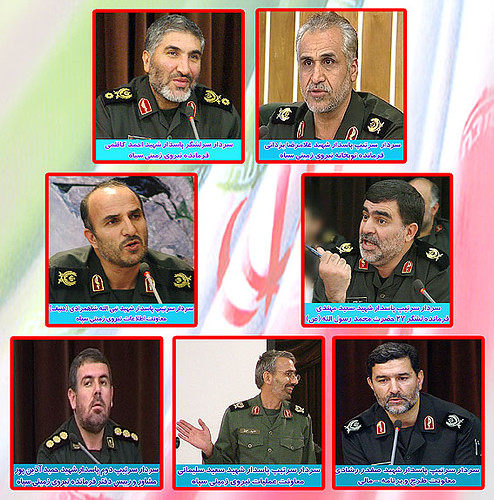 General Ahmed Kazemi, the commander of the IRGC's ground forces,
* Brigadier General Gholam-Reza Yazdani, IRGC artillery commander,
* Gen. Shahramoradi Hanif Montazer-Qaem, IRGC Ground Forces Intellligence chief,
* Brigadier General Saeed Mohtadi, commander of the 27th (Mohammed) Division
* Hamid Azinpour, aide to General Kazemi
* Brigadier General Saeed Suleimani, commander of operations for IRGC ground forces
* Gen Safdar Reshadi, Deputy Commander of Ground Forces.
The other dead IRGC commanders killed in the crash were identified as follows:
Mohsen Assadi, aide to General Kazemi
Colonel Ahmad Elhaminejad
Colonel Morteza Bassiri
Initial reports suggested that Brigadier General Qassem Suleimani was among those killed in the crash, but later reports stated that the dead Brigadier General was Saeed Suleimani, the commander of operations for the IRGC ground forces.
Slanted by some as serious retaliation for his alleged "murder" of so many press members and other philosophical opponents in the C-130 crash, the event is hard to place at the door of either the old guard senior Mullahs like Khamenei and former President Ali-Akbar Hashemi-Rafsanjani or perhaps France betraying them. Speculation has also proffered an American or Israeli Special Forces operation to weaken the IRGC.
Here we return momentarily to "Allah's Plane".
General Ahmed Kazemi, the commander of the IRGC's ground forces,
* Brigadier General Gholam-Reza Yazdani, IRGC artillery commander,
* Gen. Shahramoradi Hanif Montazer-Qaem, IRGC Ground Forces Intellligence chief,
* Brigadier General Saeed Mohtadi, commander of the 27th (Mohammed) Division
* Hamid Azinpour, aide to General Kazemi
* Brigadier General Saeed Suleimani, commander of operations for IRGC ground forces
* Gen Safdar Reshadi, Deputy Commander of Ground Forces.
The other dead IRGC commanders killed in the crash were identified as follows:
Mohsen Assadi, aide to General Kazemi
Colonel Ahmad Elhaminejad
Colonel Morteza Bassiri
Initial reports suggested that Brigadier General Qassem Suleimani was among those killed in the crash, but later reports stated that the dead Brigadier General was Saeed Suleimani, the commander of operations for the IRGC ground forces.
Slanted by some as serious retaliation for his alleged "murder" of so many press members and other philosophical opponents in the C-130 crash, the event is hard to place at the door of either the old guard senior Mullahs like Khamenei and former President Ali-Akbar Hashemi-Rafsanjani or perhaps France betraying them. Speculation has also proffered an American or Israeli Special Forces operation to weaken the IRGC.
Here we return momentarily to "Allah's Plane".
With scary air crashes by outdated, barely serviced aircraft, Ahmadi-Nejad decided to use the "Allah Plane" to travel to Saudi Arabia.
When the C-130 radioed it was in an emergency situation, instead of being allowed to return to Tehran's main airport to land, it was held in a pattern and then told to head for a desert airport. The reason? Tehran airspace was "closed" till the "Allah Plane" took off with the new President. None of the seasoned pilots accepted to fly the C-130, which was finally foisted on a young, inexperienced pilot, as obligatory performance of his national duty.
Another reason was that the powers in charge tried to avoid a major disaster happening so close to home with journalists on board and journalists within easy reach of the debris. Which would not have been the case if the crash has happened in mid-desert. Technically speaking, "Allah's Plane" killed over 100 people - most of them journalists who could not be counted on to support the "gang". But why August 2006? Realizing he had to gain the upper hand, Ahmadi-Nejad began replacing everyone in a mid-lower, mid-ranking and everything in between to the very top government positions with his trusted allies, chosen among the Revolutionary Guard Commanders. He replaced almost everyone both in the capital city of Tehran and throughout every province. From the Governor on down. While getting his cabinet approved, he had a go at all the banking organizations and management positions putting his people in place and recently retired some 40 University professors to open up teaching positions to be carried out by proponents for his own brand of Islam - Hojatieh.
On the international scene, with which he had no experience then and still has almost none, he changed many ambassadors, too, recently recalling even more of them.
He watched his nuclear negotiators (whom he also changed) continue to buy time as Iran scrambled to acquire uranium fuel refining capability to weapons grade levels.
NOT to acquire nuclear weapons - he already has at least four operational nuclear missiles - and about half a dozen other nuclear warheads possibly useful for an EMP (electro-magentic pulse) weapon - but to have the capacity to build many more to influence Iran's position in the global gamesmanship he has set in motion. And appears to be winning!
Here we approach the August date. Firstly, July is much too early for Iran.
He needs about the August amount of time to have at least one operational, new Shahab4 long range missile with a North Korean nuclear nose cone he can remove from a Shahab3.
I would posit the sudden North Korean intended test launch of their long range - up to 14,000 kilometers - missile is a proving launch for Iran and to receive payment from Iran for this equipment.
North Korea has little incentive to nuke America but lots of motive to provide - for a hefty price - the same capability to Iran.
Futhermore, reports state that mid-August is the date Ahmadi-Nejad expects to go to Mashhad and announce from the shrine there of the Saint of Miracles, Imam Reza, that Iran has managed to refine weapons grade uranium.
Which when combined with technology bought through A.Q. Khan of Pakistan clearly puts them in a position of a nuclear power and thus required to be treated with kid gloves by the rest of the world.
Specially the Western world but no less so by Arab States of the region and Moslem States in African and the far East.
Thus the first step to Iran becoming the most prominent Moslem power - albeit Shia - and Ahmadi-Nejad the modern Nasser of Islam.
In the meantime, it appears that the US State Dept. has prevailed in imposing a policy of negotiation instead of military threat and reports point to President Bush taking the military option off the table and espousing internal regime change.
If we fail to take action in time, we will face a much tougher fight down the road, including nuclear attacks by Iran. Perhaps not inside the USA at first, though the Hojatieh mindset in charge over there invites this as a part of their necessary, intended apocalypse to bring back their 12th Imam - but certainly on Israel, on at least one European country and probably an EMP (electro-magnetic pulse) bomb over the USA.
Interesting to watch here is neo-Iran's announcement that by September gasoline (petrol) will be rationed and no longer imported. Puzzled by this absolute invitation for unrest by the populace, analysts fail to realize that restricting the amount of fuel for transportation also restrains people's ability to travel and is a form of self-imposed curfew.
Reports that the Iranian Oil industry workers plan to strike and upset production is also unusual unless linked to gasoline (petrol). During the start of the revolt against the late Shah's government in 1978, oil company refinery workers went on strike but their effect, intended to hurt revenues, for the most part, was to limit the amount of available kerosene, which created enromous hardships as it was used to heat homes and offices. Winters can be fairly severe in Iran and this happened in Autumn and continued through winter.
And finally the potential election of a new Supreme Leader - for which position the Hojatieh spiritual leader of Ahmadi-Nejad, Ayatollah Mesbah Yazdi, will be vying, takes place around November, so shortly on the heels of the hoped for announcement that uranium has been refined to weapons grade. Which he hopes will be the clincher for a changing of the guard at the very top. Both in Iran and in the USA, where critical elections may change the landscape for both.

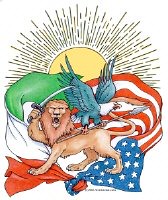
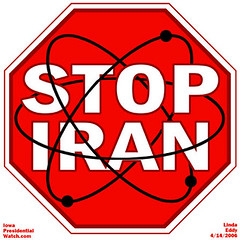

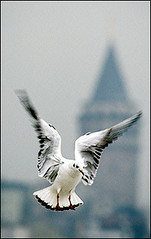



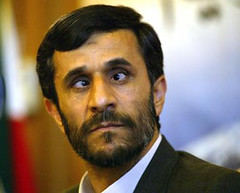



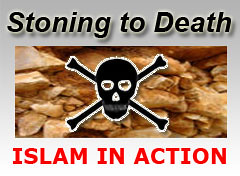

No comments:
Post a Comment